How to Continue a Android Update Qfter
Android 13 was released with much fanfare in August 2022. In contrast to its predecessor, Android 12, the new Android version only offers a handful of updates. It's focused on making refinements and fixing up little bits and pieces here and there that were left over after the big Material You interface overhaul that Android 12 brought to the table. Like Android 12L, Google's tablet and foldable-focused mid-term update, Android 13 is less exciting, but it still comes with some select quality-of-life improvements.
Don't get me wrong, though. After the big, busy, and controversial release that was Android 12, it's good that we get some breathing room and a period of settling in. Android 13 doesn't fundamentally change how Android looks and feels, but instead goes back to a more iterative approach in trying to refine what Google unleashed in Android 12, with thoughtful and great underrated features.
Before we dive into the review, remember that this is a look at what Android is like on a Pixel phone — the Google Pixel 6, to be specific. While underlying features like new permissions, privacy changes, and API tweaks will also make their way to other phones, a lot of things talked about here will be most visible on Google Pixel phones. Rest assured that we are taking a closer look at what Android 13 is like on other phones, too, like Samsung's One UI 5.
Android 13 is Google's latest and greatest operating system for smartphones, bound to power billions of phones in the future. In contrast to its predecessor, it's one of the smaller upgrades, but it still packs a few great features that you don't want to miss out on.
Key Features
- More Material You color options
- Opt-in notifications
- Brand new Pixel Launcher search experience
- Per-app language settings
- Redesigned media player
- New photo picker dialog
Pros
- Doesn't fundamentally change the way how your phone works and looks
- Much-needed advanced Material You enhancements
- Per-app language settings are a game changer for multilinguals
Cons
- One of the smallest Android updates in a while
- Split-screen regressions for phones
- Search regressions in the Pixel Launcher
- Per-app language setings are only available for a handful of apps at launch
Android 13: Design and interface
Material You evolution
Android 12 introduced Material You, Google's latest iteration of its Material design language. The Material You update was, and arguably still is, a controversial change that completely upends how Android's interface usually works. Instead of designers carefully crafting which color palette to use for their apps, Material You pulls a dynamically generated set of colors from your wallpaper, creating what possibly is the most flexible and personal interface in any app that supports it.
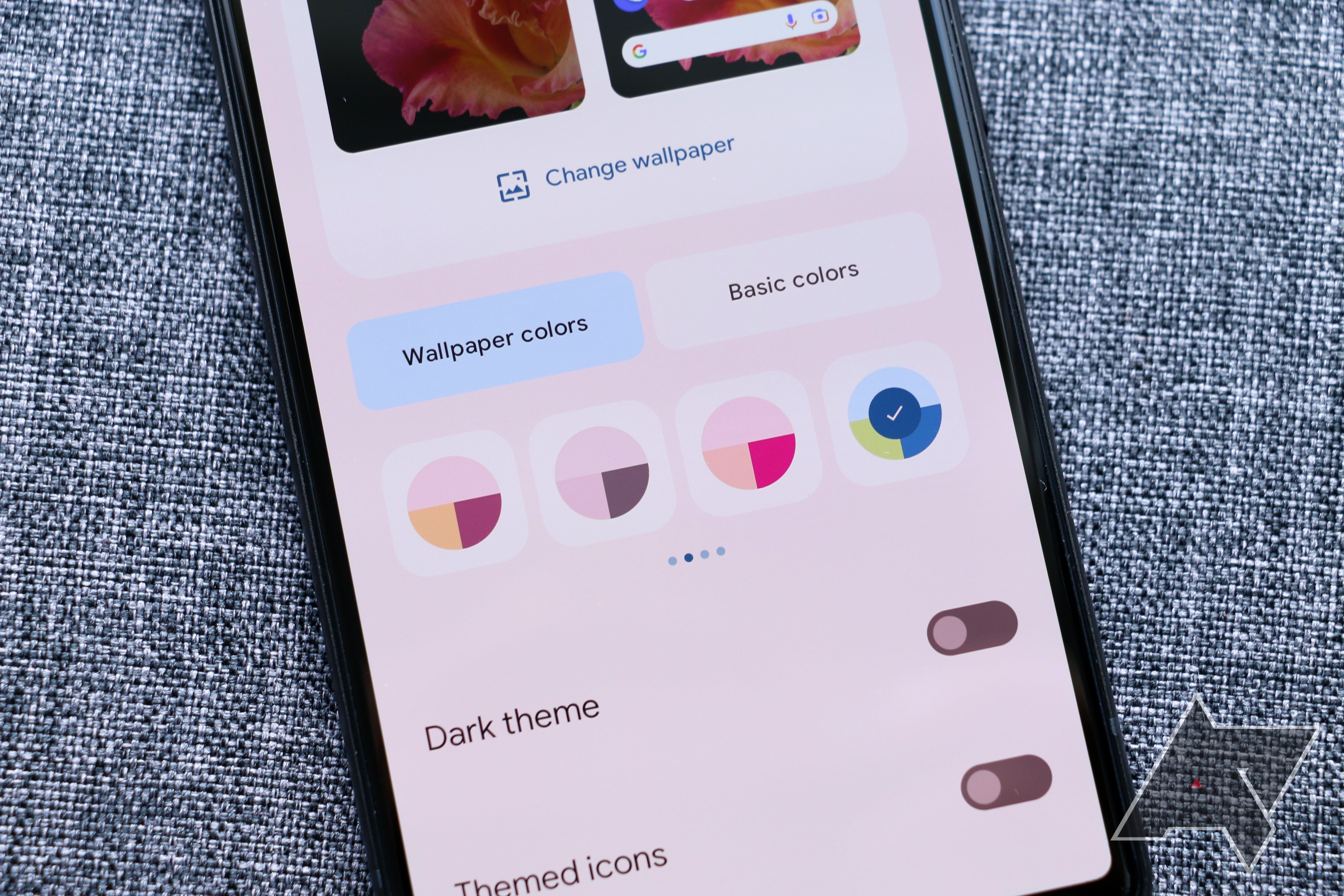
Android 13 doesn't outright fix any of the underlying issues with the new design language, but it builds on top of what Android 12 introduced and refines certain aspects. Most notably, Android 13 offers many more extracted colors to pick from, giving you up to 16 different color themes from one wallpaper. This gives you a lot more flexibility in changing your interface colors without switching wallpapers, and it is a much-needed push in the right direction. This is all intuitively accessible from the Wallpapers & Style settings on the home screen.
Like Android 12, Android 13 also lets you turn on themed icons for your home screen, which builds on top of what the first release brought. Android 13 is the first Android version to bring themed icon support to third-party apps, so you're finally no longer limited to themed Google apps. In theory, this is supposed to dunk all of the apps on your home screen into the same wallpaper-based background and foreground colors, leaving you with a uniform-looking design. We initially feared that third-party developers would be reluctant to implement support as they might want to retain their brand colors, but we are positively surprised how many big developers have already jumped on board. WhatsApp, Twitch, Spotify, Reddit, Microsoft Edge, LinkedIn, Bitwarden, 1Password, PS Remote Play, Pocket, VLC, Pinterest, Signal, and Telegram all already support the new system. At this pace, a full Material You look without compromising on which apps to add to your home screen doesn't seem out of reach anymore.
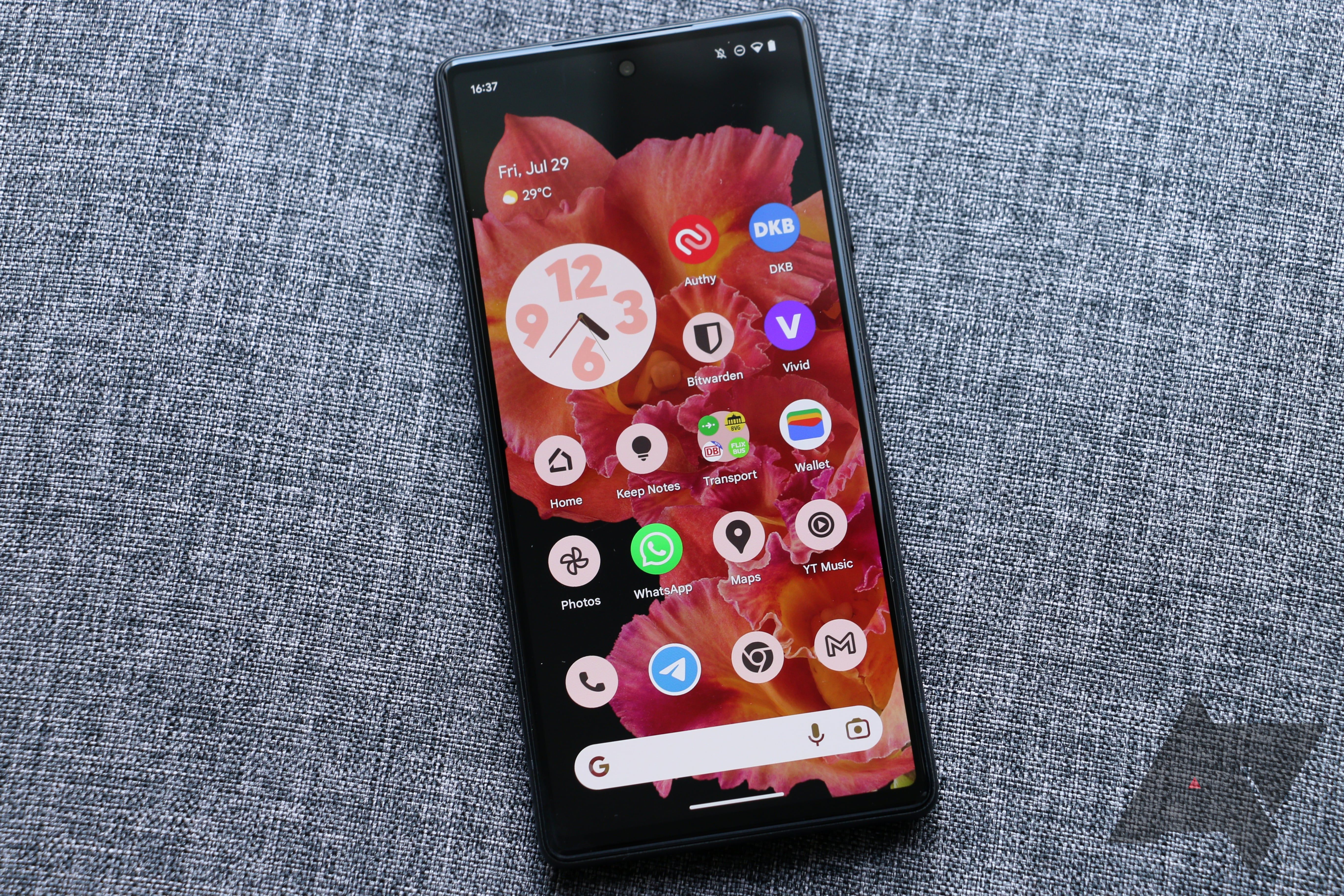
My home screen during the beta vs. my home screen a month after the stable launch. We're getting there!
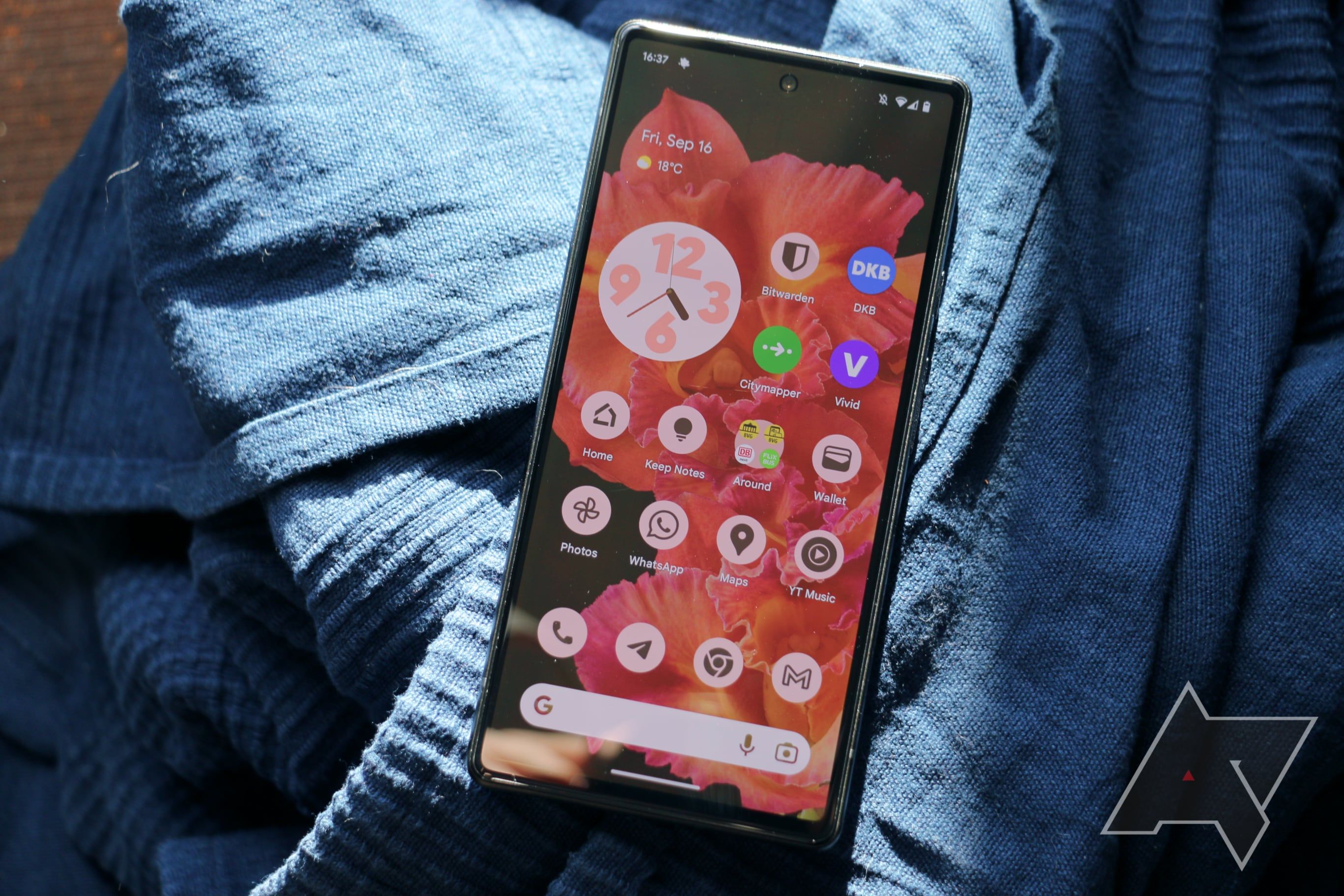
Since themed icons will remain opt-in for a long time, we might still have to wait until this theming option becomes truly ubiquitous. Google hasn't exactly led by example, either. Its brand-new Wallet app initally came without a themed icon and has only recently received one, and Stadia still doesn't offer this look.
I'm also still sad that Google hasn't brought back custom app icon shapes and fonts. This was one of the staple customization options in Android 11, and if it's done correctly, it wouldn't even clash with Material You. Other phone manufacturers and third-party launchers still allow you to customize these things, so it's sad that Google seems to have decided not to offer it anymore.
System UI changes
Apart from all the Material You color magic, Google made a few more tweaks to the system interface. The new, bolder navigation bar will probably be the most obvious one when you update from Android 12. It doesn't really serve any purpose apart from aesthetics, and it takes up ever so slightly more vertical space than the smaller navigation bar first introduced in Android 10. It now resembles iOS' navigation bar more closely, though it's still not as long and thick as the alternative on the iPhone is.
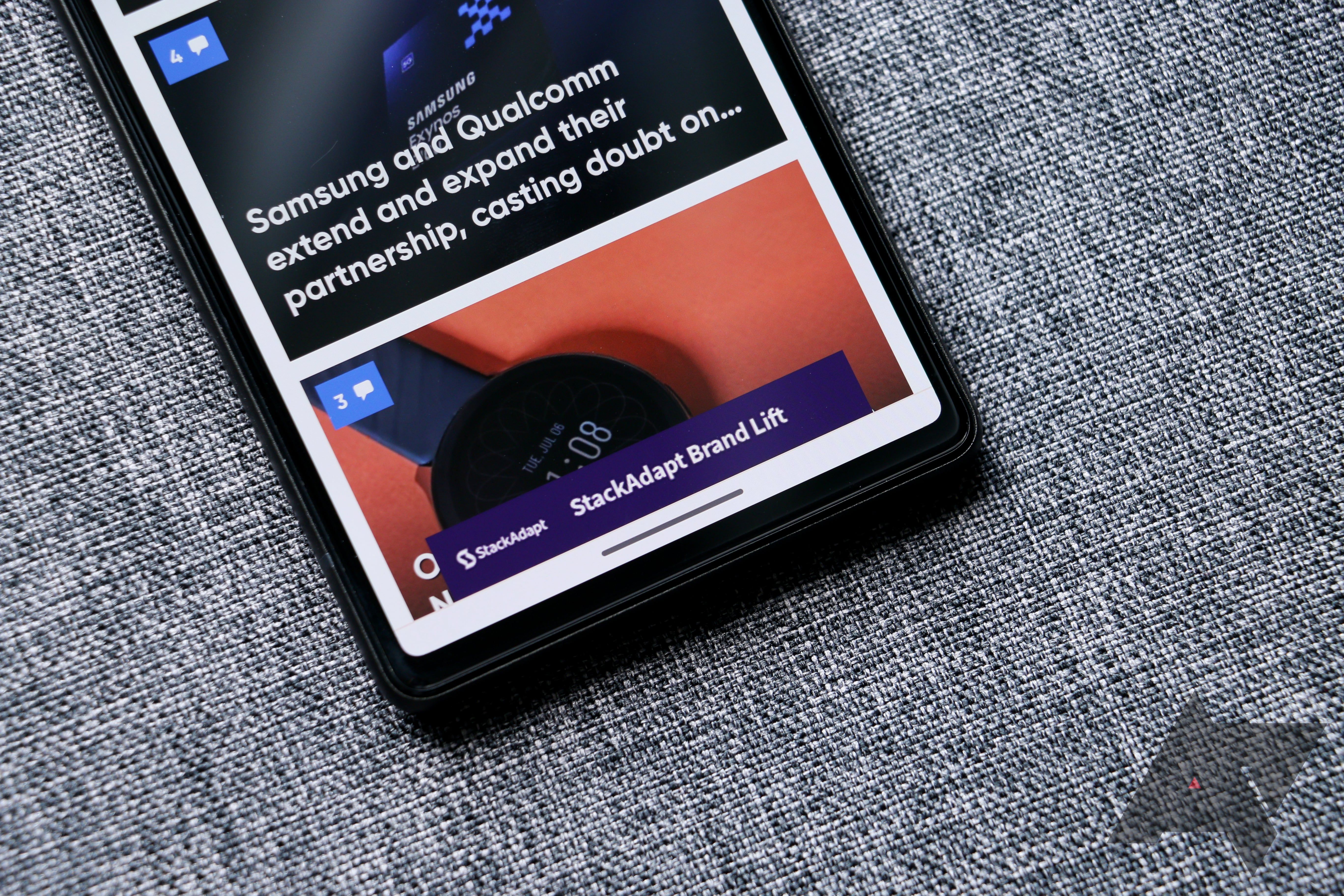
The new bar makes it even more of a shame that Google still doesn't enforce transparent backgrounds for the navigation bar as much as Apple does, as the additional space used up by the new bar wouldn't matter as much in that case. As it stands right now, you will lose a few precious pixels in almost all apps you're using thanks to this change, including some widely used Google services like Chrome and Gmail that don't support transparent navigation bar areas.
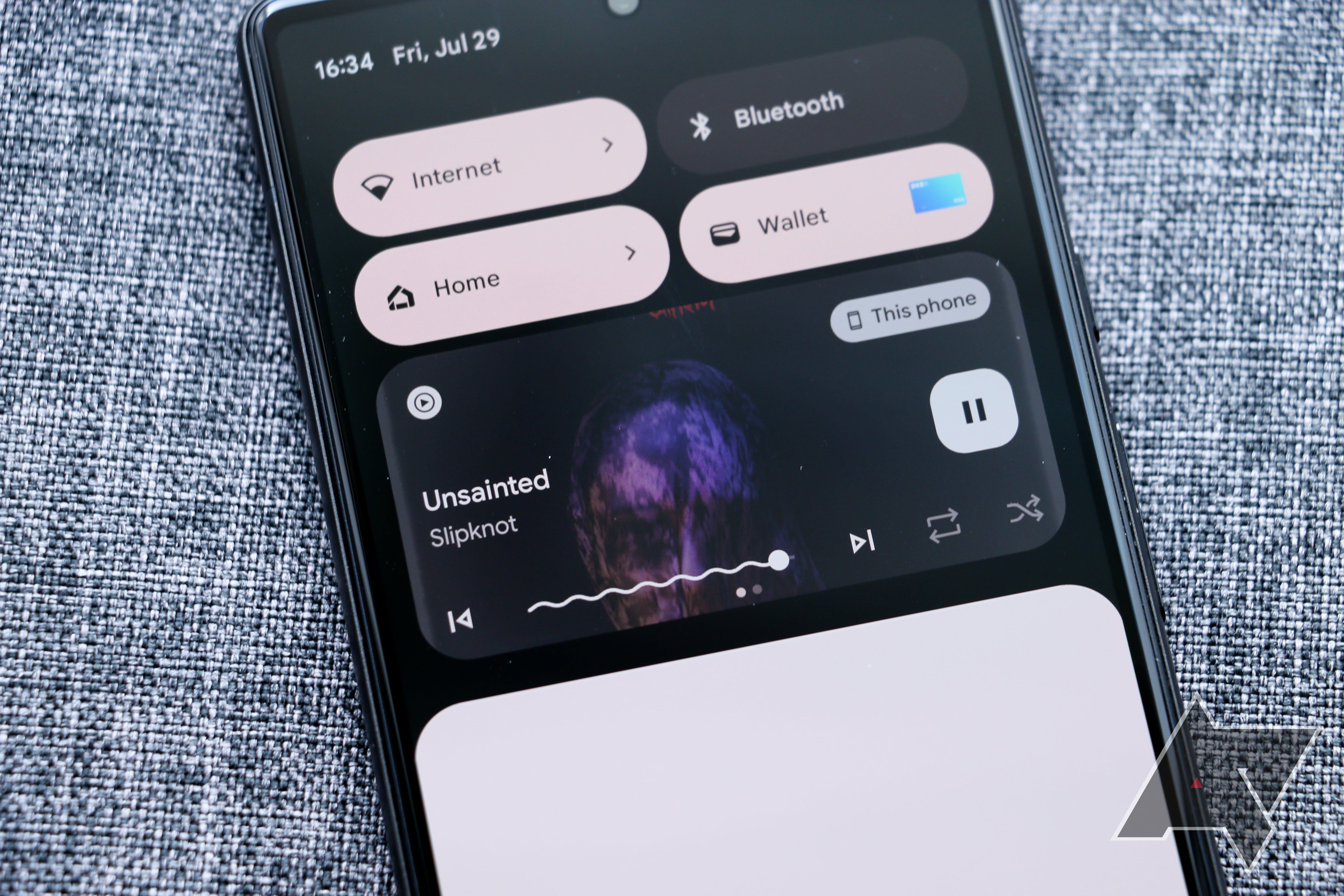
A more substantial tweak comes to the media player living in the notification shade and on the lock screen. Apart from some minor reshuffled button placement, you'll notice that the seek bar is now squiggly for the audio you've already listened to. While it's visually not the most pleasing thing to me, it serves a purpose. It only squiggles when you're actively listening, which allows you to see at a glance if audio is running. That's particularly handy when you just want to check if you forgot to turn your music off at low volumes or when you're about to put your headphones away.
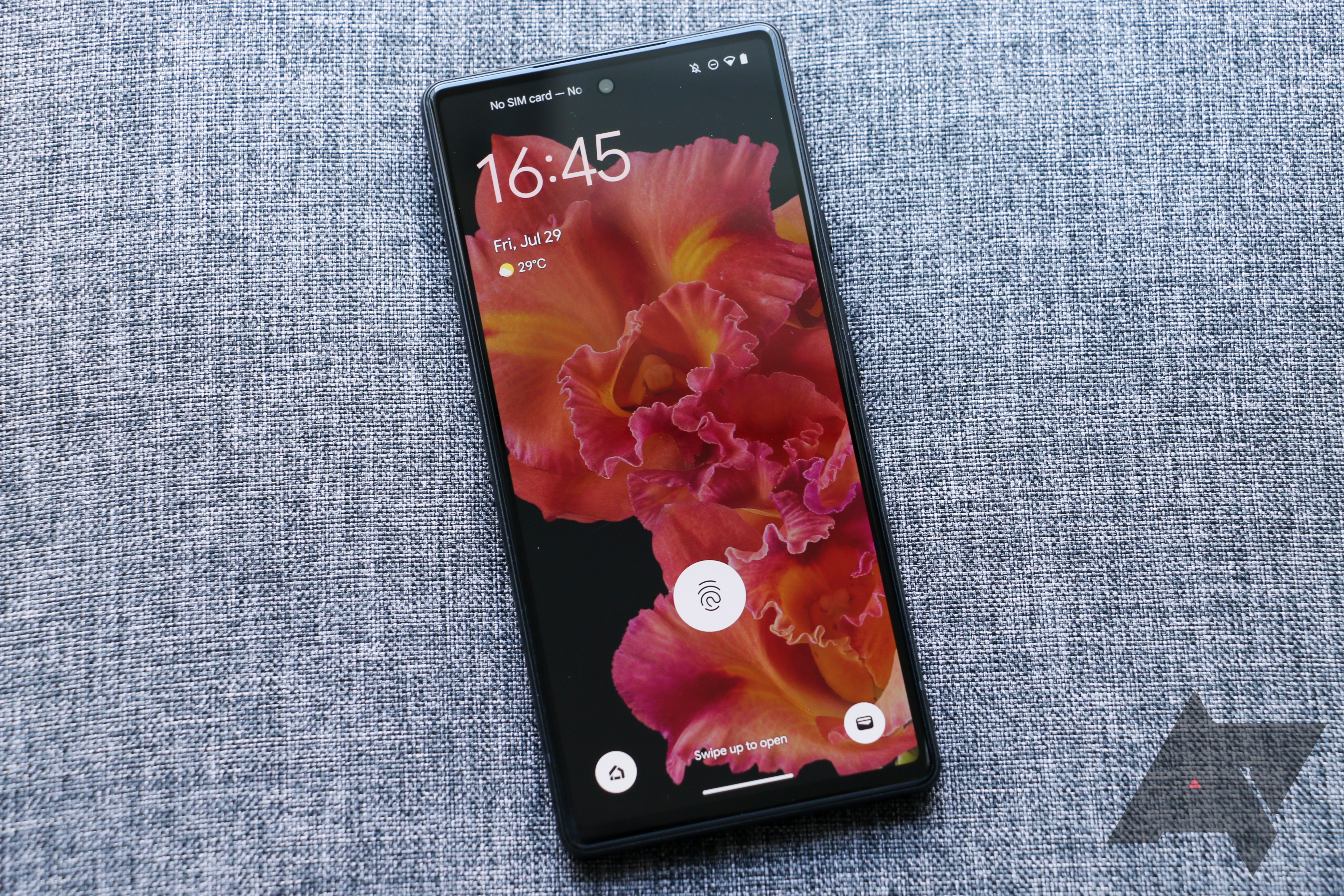
Finally, two small changes are coming to the lock screen. It's now possible to turn off the dual-line clock when you don't have any notifications, so you can ban it to the top left corner permanently. You can also finally control your smart home devices from the lock screen without having to unlock your phone, which was a questionable limitation that Android 12 introduced. Both of these are optional and need to be activated in system settings in the lock screen options under Display . ( Update: Note that this option was already added in Android 12L, as a commenter pointed out.)
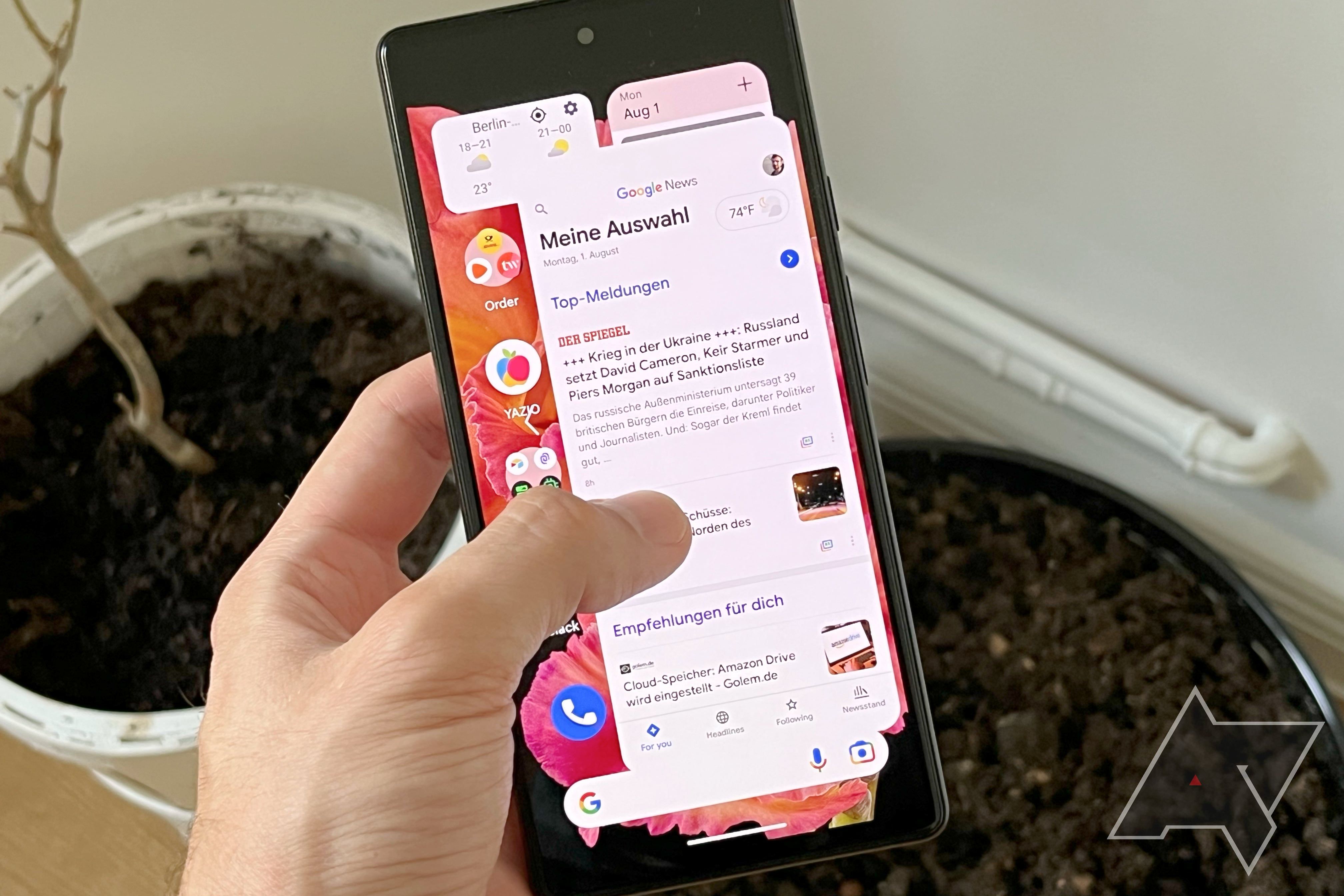
Google is also laying a foundation for a tweak to back gestures, though this will only go live with the subsequent release, Android 14. When the next move brings you to the home screen, you will get an animation similar to what you see when you swipe up from the bottom to go home, with the app window increasingly getting smaller and closer to the corresponding icon on the home screen. This is supposed to better indicate when you're about to leave an app. To enable this behavior, you need to enable your Pixel's developer options and toggle on predictive back animations. The only app I spotted working with this was Google News. Following some updates after the stable launch of Android 13, the app no longer exhibits the behavior for me, either.
The Pixel Launcher's new search experience
The Pixel Launcher doesn't enjoy many visual changes compared to Android 12. It revamps how search works yet again, though. On Android 12, tapping the search bar on the home screen would bring you right to the Google app for search, while the search bar in the app drawer was focused on local results like apps, contacts, settings, and in-app content. Android 13 unifies the look and feel of both of these search experiences again, but they still remain slightly different. And then the new search experience hasn't even been enabled for everyone following the stable update to Android 13. It's just plain confusing at this point.
Spot the subtle but big difference: two pairs comparing home screen search on the left and app drawer search on the right
When the new experience does show up on your phone, tapping the search bar on the home screen brings up a Material You-themed interface that shows you a row of suggested apps at the top and a list of recent Google search terms below it. When you start to type, the interface is populated with app and web search results. Only hitting a suggestion/result or the search button on the keyboard will hand you off to the Google app. This makes for a smoother transition between the home screen and the search interface, and I like what Google has done here. It feels much more refined than just using the search bar as a widget that opens the Google app upon tapping it. Using this search experience, you can only find web results and apps, though — no further on-device search is possible here.
The search that opens when you swipe up on the home screen and open the app drawer is slightly different. When entering it, you will still see the familiar collection of all the apps you've installed on your phone, but once you start typing, the interface looks more like the one you get via the search bar on the home screen, with app suggestions at the top and a list of Google search suggestions below it. However, you can scroll further down here for more, revealing a "From this device" section. Here, you can see results like in-app shortcuts, settings shortcuts, and toggles, and options to search for terms within apps (Search on YouTube, Search on Google Maps, etc.).
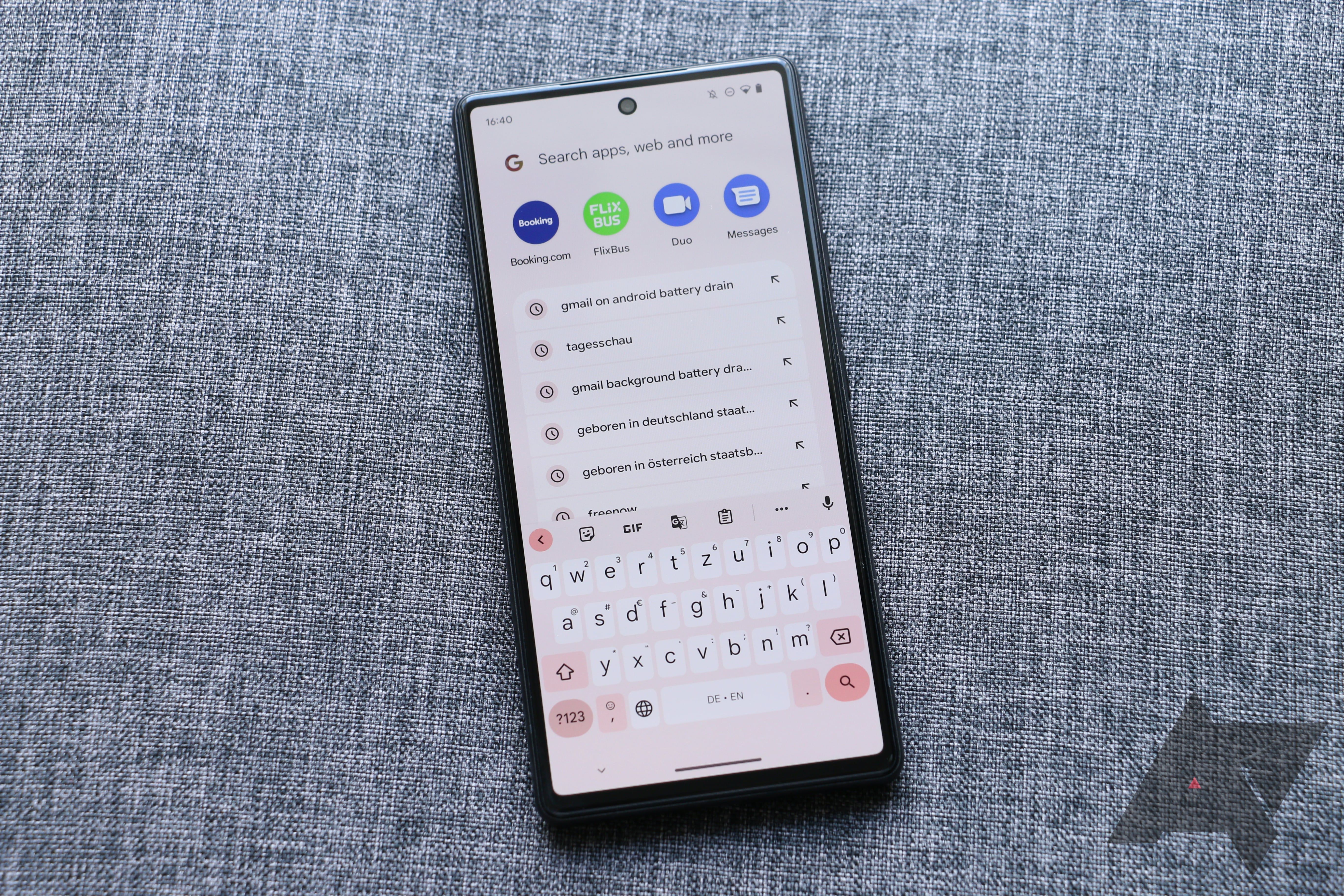
There are some regressions compared with Android 12 and iOS, though. When you want to use the keyboard to search for and then open an app, you can no longer simply hit enter/search to open the first app listed. Instead, you have to tap its icon at the top. Otherwise, you will end up doing a Google search for whatever phrase you entered. If you routinely do this, prepare for loads of searches like "mes" or "gma" in your search history when you just wanted to open Messages or Gmail. I would have preferred for Google to retain this "enter equals open app" behavior in the app drawer, as it adds more friction and makes you stretch your thumb all the way to the top of the screen again just to open an app. Also, contact search is inexplicably missing in Android 13 altogether.
Given how closely these two search experiences on the home screen and in the app drawer match, I don't really understand why Google found the need to separate how they work at all. Something like this will only cause the less tech-savy to be confused, wondering why they can sometimes find their Bluetooth toggle with search and sometimes not. Heck, even I routinely need to do a second take because of this arbitrary functionality difference in two interfaces that look 100% the same, and I'm living and breathing Android every day.
Google, you almost nailed this with Android 12, and just made everything worse with Android 13 again.
Android 13: Privacy
Privacy is a difficult concept on Android. After all, Google is an advertising company that lives off the data people share with it. But the company is still trying to make the process more transparent and make it harder for bad actors and malware to access data that isn't needed. Google will likely never go as far as Apple with its "Ask app not to track" prompt that cost Facebook billions of dollars in ad revenue, but small improvements are sprinkled here and there in Android 13.
For one, Android 13 adds a new media files permission that makes access to your files even more granular for apps. The approach means that apps have to ask for access to audio, video, and image files separately, which makes it possible to preserve your privacy even further. Of course, apps will have to support this new method, but Google will probably make sure that it doesn't take too long until it's mandatory.
Speaking of changes in media handling, Android 13 has also received an iOS-esque photo picker interface. Apps that don't need access to all of your files can use this to make it easy to select an image or video that you want to share in, say, a chat or pass on to a photo editor. The trusty document picker of old does the job just fine, too, though. This is just a prettier, dedicated interface for media files that will hopefully be picked up by chat apps and similar services. Here, it will likely also take a while until the majority of apps switch over, if they even will without incentives or policy changes from Google.
Android 13: Features
I think we've established the theme — Android 13 isn't the most feature-heavy release. Nevertheless, there are a few additions worth diving into, like improvements to permissions, a game-changing enhancement for multilinguals, and some split-screen and big-screen shenanigans.
Opt-in notifications
Every year, Google changes at least a little bit on the notifications front. This year is no exception, but the company is — thankfully — doing a lot less than usual. In Android 13, apps are no longer able to send you notifications right after you've launched them for the first time. Instead, a dialog will pop up, asking you if you want to allow them to interrupt your attention at any moment they choose to.
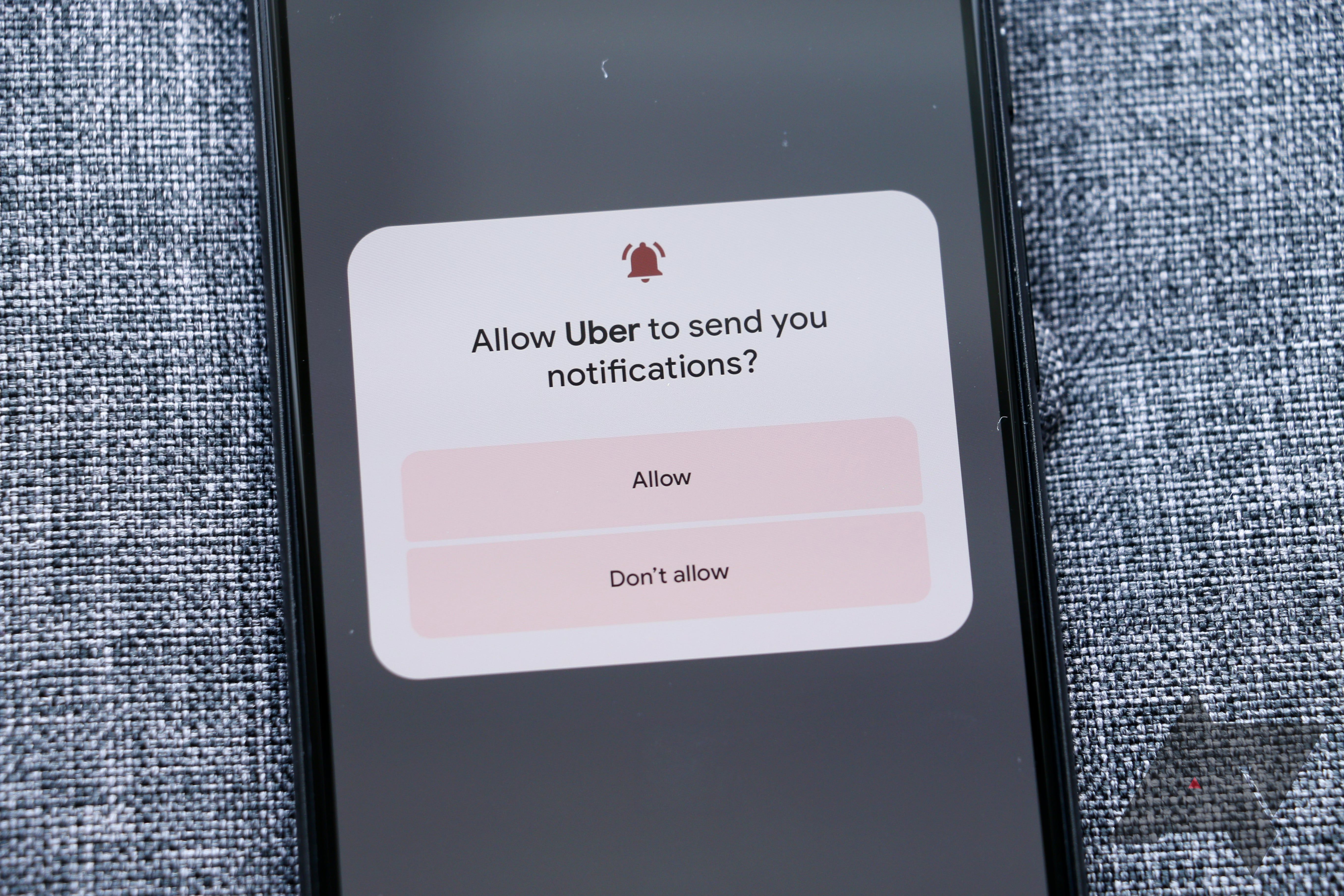
This change feels overdue, as the previous solution to a less disruptive phone was a bit more cumbersome. You would have to wait for an app to send you a notification and then disable it by long-pressing said notification, or you'd have to head to the app's permissions overview in system settings. The new dialog does add an extra step to most apps' setup processes, though, so there is that downside.
Interestingly enough, Apple has offered just this for a while already and makes matters a little more granular thanks to its scheduled notification summary that you can set up in settings. That way, apps that you don't deem only get to disrupt your life can only send you notifications twice a day. I would really love to see Google copy this.
Per-app language options
In another act of catching up with iOS, Android 13 has finally introduced support for changing your preferred language on a per-app basis. For multilingual people like me, this is a game changer. I finally don't have to endure apps poorly translated into English anymore when I could use them in German just fine. There are a few services like banks and transit apps that I also simply prefer to use in my mother tongue.
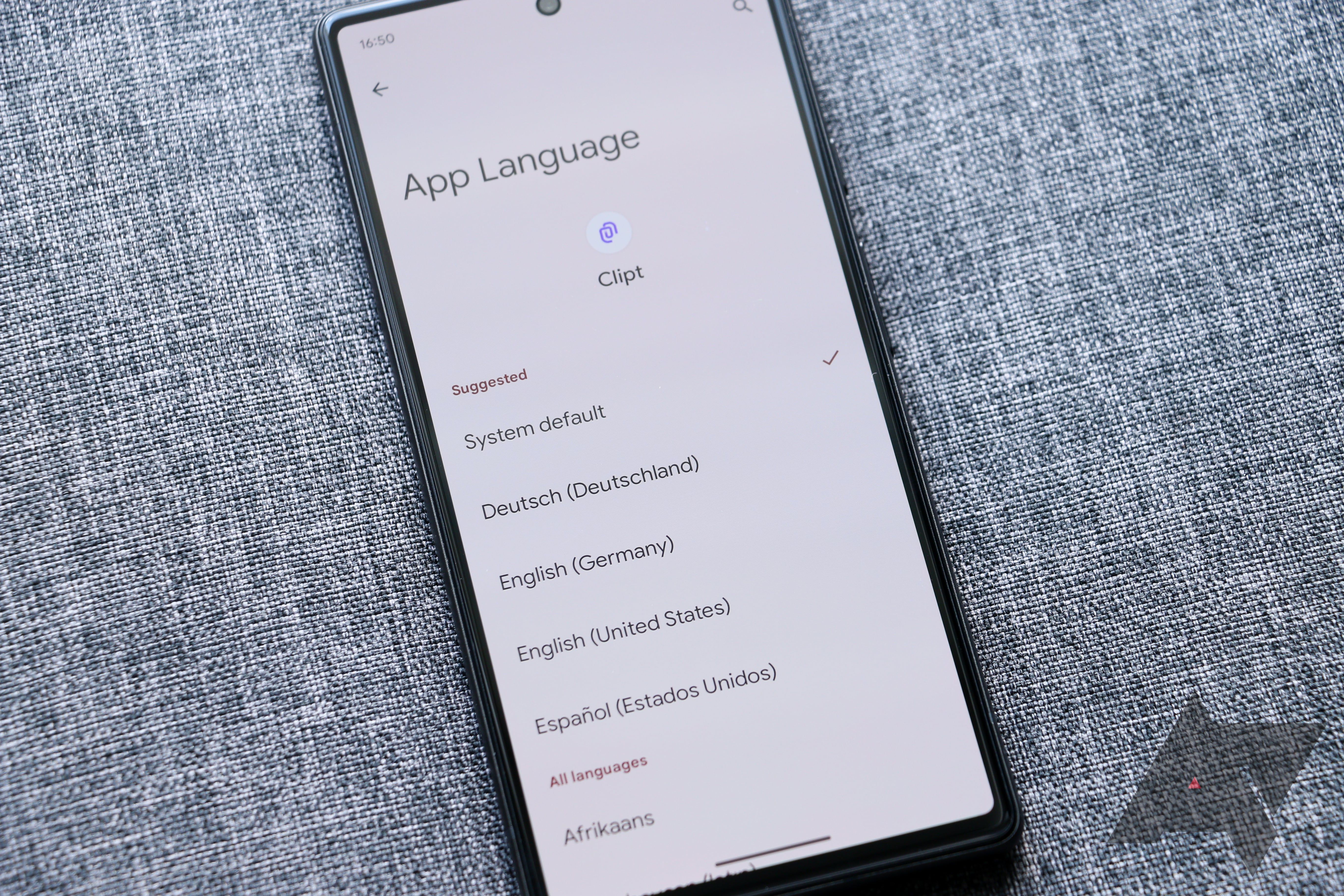
Google made changing the preferred language for your app dead simple. You can tap and hold an app icon on your home screen and hit the little i button in the pop-up menu to get to an app's specific language options. There is also a new section in system settings that allows you to see a list of apps that support multiple languages, which you can alternatively use to tweak everything on your phone to your liking.
In earlier test versions of Android 13, the per-app language options could be applied to any and all apps, but that changed in more recent betas closer to the launch. Now, only apps that have specifically declared support for multiple languages get the option to switch to a tongue different from the system, and that's a shame. While changing the language brought up a few issues when I was on Beta 2, the selection that's left right now is much smaller. In fact, right now I've got only nine apps left with that capability, two of which are unstable Chrome versions.
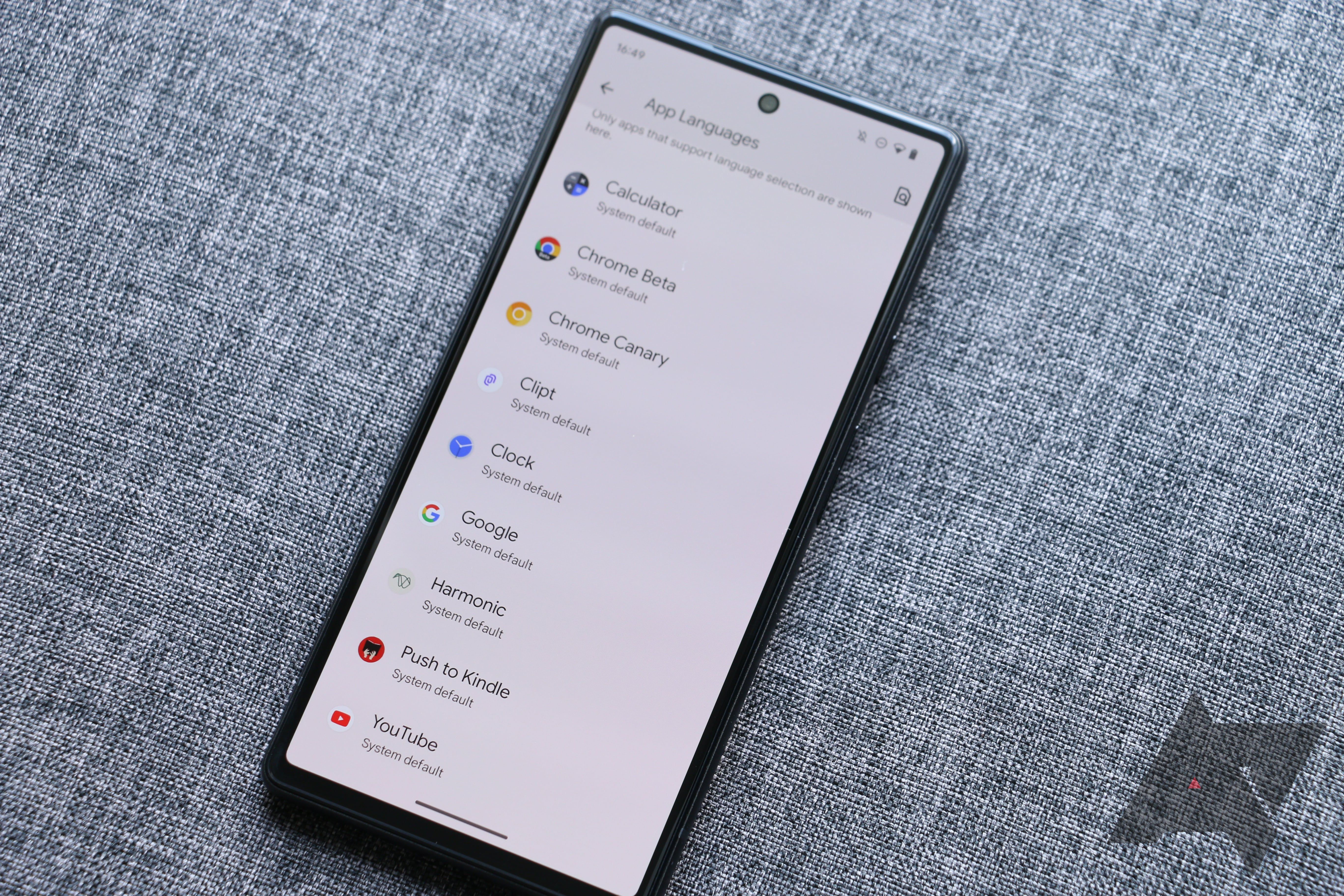
I can only hope that developers will add this relatively minor tweak to their apps, allowing for language changes to their apps sooner rather than later, but we all know how slow Android app development can be. Google should have just enabled the option on apps with no way to opt out, forcing a handful of app developers to fix potential issues rather than waiting on the majority of apps that would work just fine to add a small XML file to declare support.
Split-screen regressions and big screen improvements
Android 12L and then 13 introduced some much-needed tweaks for big-screen devices like tablets and foldables, but in the process, Google made it more cumbersome to use split-screen layouts on regular phones. On Android 13, you still need to enter the Recents screen and then tap and hold the app icon on top of the preview to start split-screen mode. However, Android 13 then only lets you pick other apps from the Recents screen to start split-screen mode with. The interface no longer lets you access all apps on your phone.
This means that you first have to get the pair of apps you want to use in split-screen mode ready in your Recents overview, which makes the process of using two apps at once even more difficult and harder to access than it's ever been. It's almost like Google doesn't even want you to use split-screen mode on Pixels and is actively discouraging you from even trying.
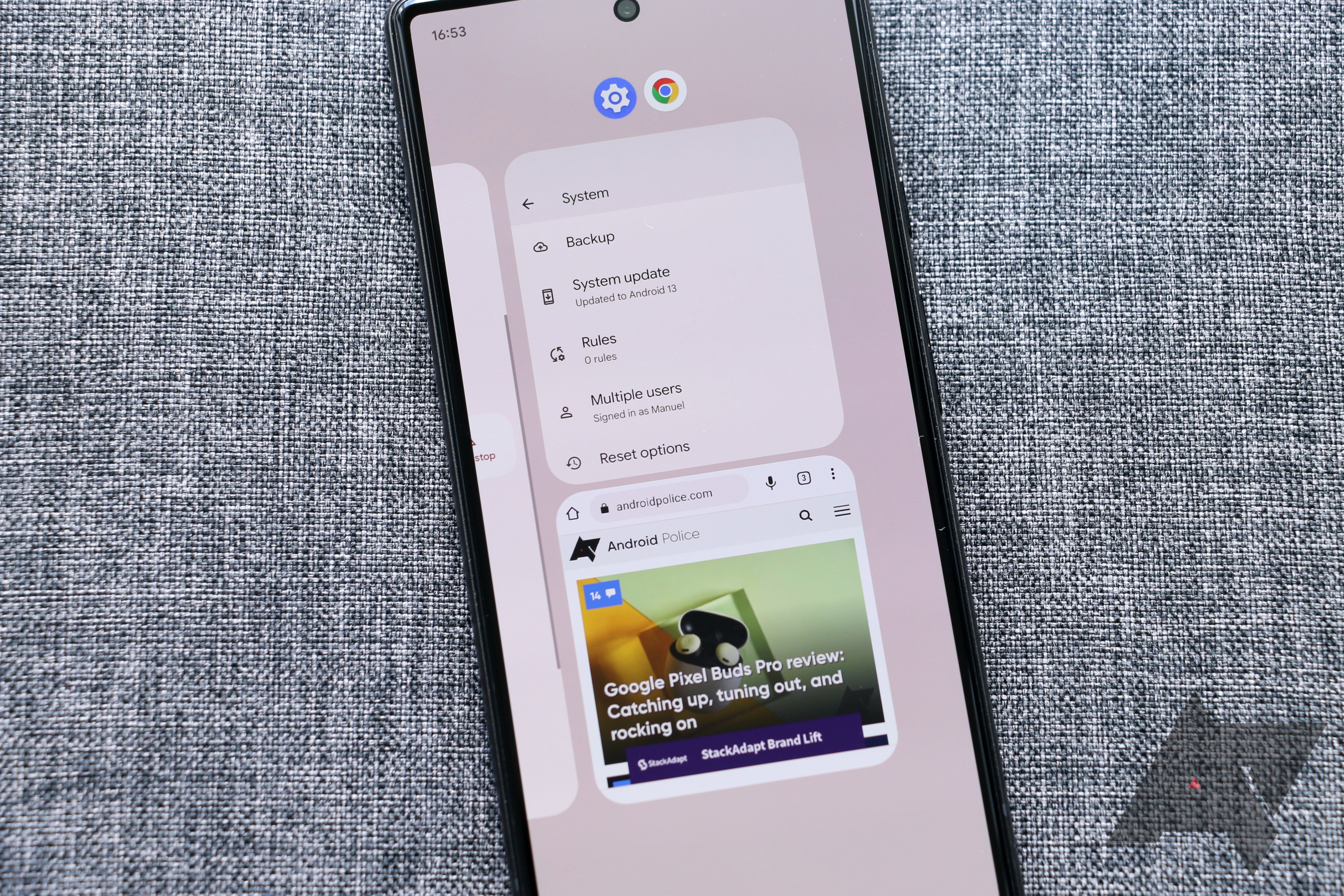
Other manufacturers have more elegant solutions for this. Samsung is one of the positive examples here with an advanced custom solution, but there are also manufacturers that stick closer to the Google look and feel that do a better job. Oppo, for example, lets you quickly enter split-screen mode with a three-finger swipe from the top of the screen. I wish Google would introduce a simple path like this.
On tablets and other big-screen devices, matters are simpler. You can simply drag an app from the taskbar onto either the left or the right side of the app you've currently opened and then enter split-screen mode like this right away.
Speaking of big-screen devices, Android 12L has already brought the bulk of improvements to them. Android 13 just picks up on a few things left over, like a new shortcut to enter the app drawer right from the task bar that pops up on tablets.
Everything else
One thing we've noticed after the stable Android 13 release rolled around were some hefty battery drain issues on the Pixel 6 and 6 Pro. A lot of people have reported increased idle drain following the update on their phones. Hiccups like these are normal for a big release, and we can only hope that Google will sort them out shortly. It's a shame the issue hasn't cropped up in beta testing, as it would have been the perfect moment to fix something like it.
For those who still use microSIM cards or routinely access USB-C sticks with their phones, Android 13 finally adds support for exFAT. The file format has been around for a long time and is an improvement over the ancient FAT32 format, which is limited to a size of 4GB per file. This makes for a much better experience in this day and age where 4K video exists.
Android 13 also introduces a quick settings toggle QR code reader. To pull it up, you need to enter the notification shade, pull it down to access your quick settings toggles, and look for the new "Scan QR code" option. It feels slightly faster than going through Google Lens, so it has its merits. Plus, it's particularly helpful in a world changed by Covid-19 where QR codes are much more common than they once were.
Google also introduced a visual clipboard editor that lets you quickly tweak the text you've got in your clipboard right after hitting copy. It's a handy change when you've accidentally selected too much or too little, and it stays out of the way when you don't need it.
A few more neat changes, in no particular order: Quick tap now supports quickly launching the flashlight, you can stop any apps currently running in the background right from a new entry in the notification shade, and you can long-press the home button or swipe from the bottom corners to invoke the Assistant again. It's now also possible to limit your network bandwidth across the entire system.
Verdict
When we called Android 12 your phone's biggest update in years, it was clear that there was no way that Google could keep up with this pace with the next full version release. But that isn't even necessary, and it wouldn't be a good thing. The Android 13 release is mostly concerned with establishing Android 12's big changes as the new standard, and thus it's an Android release with the least visual changes we've had in a while. Instead, Android 13 focuses on introducing smaller quality-of-life enhancements and quick refinements, which is really all Android needs at this stage.
With Android 13's next beta phase already underway for the first quarterly platform release and Android 14 now already looming on the horizon, it's clear that Google will focus on some further refinements in the future. We can only hope that this trend of gentle changes that don't fundamentally change the look and feel of Android phones will continue as the platform gets more and more mature.
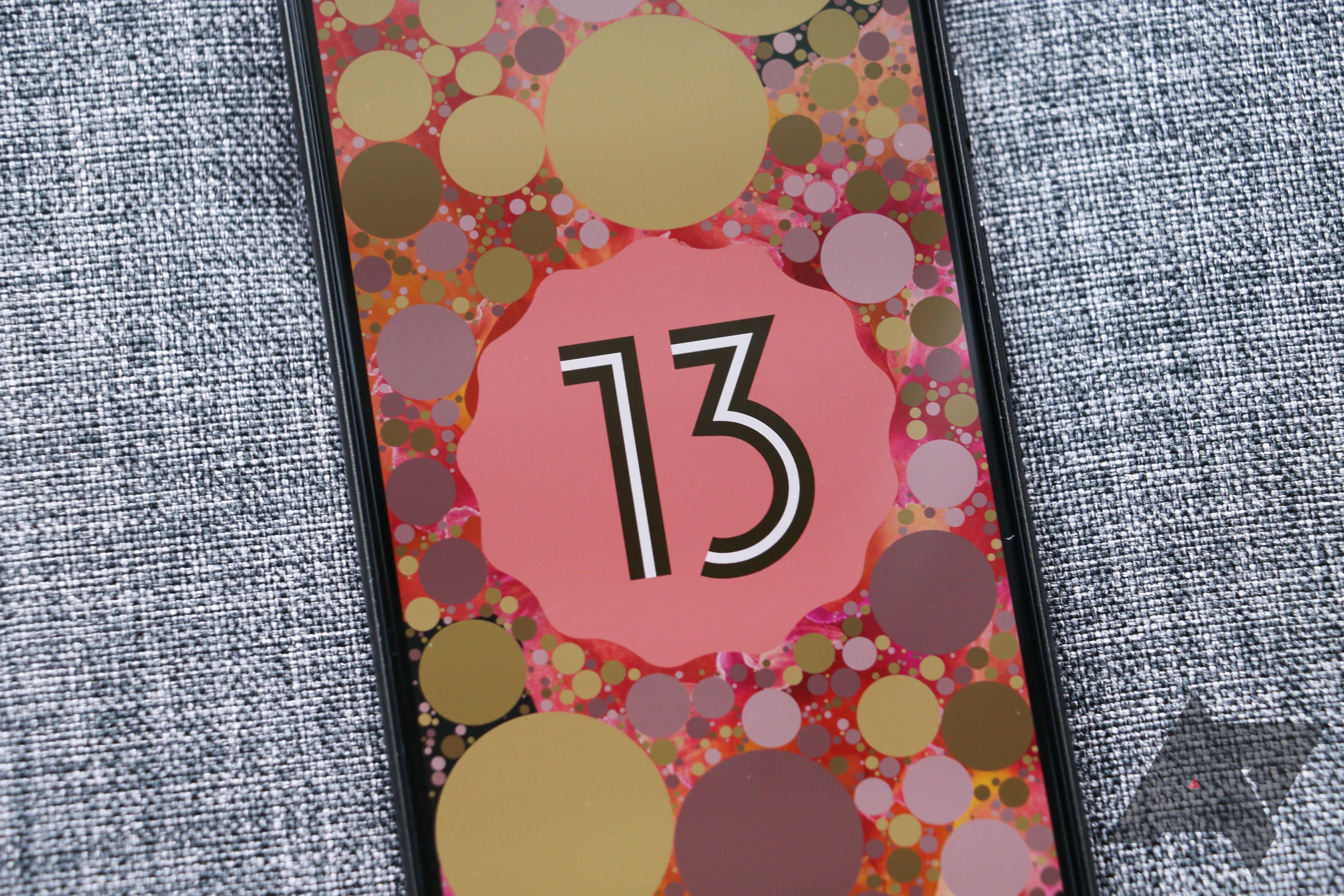
Android 13 first rolled out to Google Pixel phones, going all the way back to the Pixel 4. The Pixel 3 and 3a are now deprecated, meaning that these will be stuck on Android 12 forever. Other phone manufacturers take just a bit longer to update, so your phone may or may not have it already. If history is any indication, the first phones to get Android 13 will likely be all the great high-end phones from Samsung.
The theme we have here — Android 13 introducing only smaller, helpful changes — has already been spotted by New York Times business correspondent Daisuke Wakabayashi when he covered Google I/O. It seems like Google's days as a company with big shots for the future are over, with the company now instead running more like a strictly profit-oriented business that focuses on iteration rather than big jumps. The company only recently slashed its moonshot and future-focused Area 120 team, too.
Android 13 is the perfect example of this new, cautious approach.
What's to like?
- Thoughtful refinements to Material You make Android 13 a great foundation for years to come.
- New permission dialogs and more granular file access for apps make Android 13 even more secure than its predecessors.
- Per-app language options finally put Android up-to-par with iOS' long-existing multilingual feature.
What's not to like?
- Compared to the huge upgrade that Android 12 was, Android 13 can feel a little light when it comes to visual changes.
- Android 13 introduces some unnecessary confusion and regressions for the Pixel Launcher search.
Source: https://www.androidpolice.com/android-13-review/
0 Response to "How to Continue a Android Update Qfter"
Post a Comment